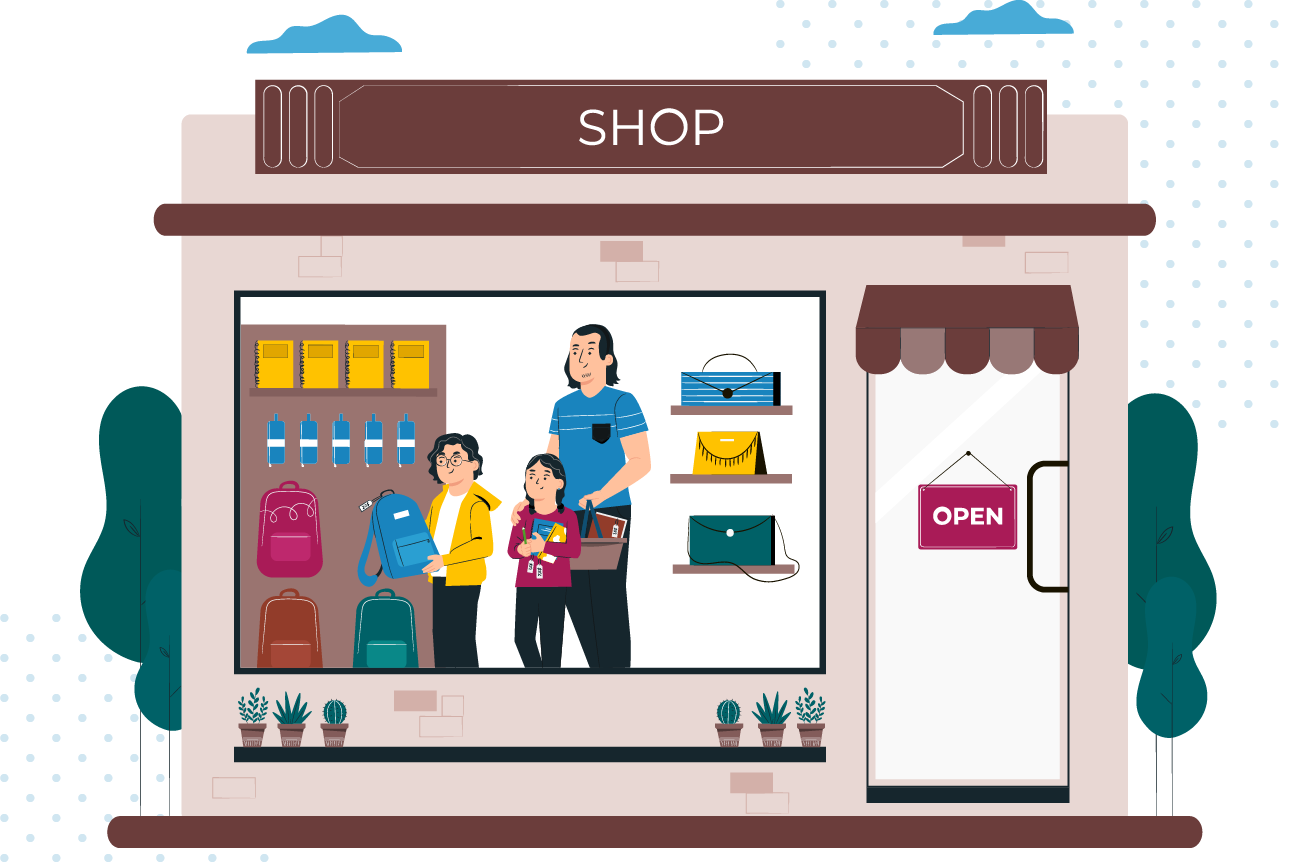Inventory Management
Manage, automate, track, and make your inventory smooth-running with scalable and customizable retail inventory management software and streamline operations.

Reimagine retail with SPEC INDIA’s retail software development services that help you deliver personalized experiences, streamline omnichannel operations, optimize processes, and improve collaboration across channels. It’s time for retail to reinvent its business model to accommodate the new normal in the post-pandemic era. Be more resilient, agile, and innovative to overcome business challenges and respond to the changes through smart retail solutions that are powered by the cloud, big data, analytics, AI, and IoT.
We are a partner to Fortune 100 Food & Beverages Company across APAC & Europe for 27 years to ease their retail software solution needs.
All Touchpoints
With the right expertise and years of experience under our belt, our end-to-end retail software solutions empower brick-and-mortar stores to take maximum benefits from digital platforms and technologies to boost sales. SPEC INDIA’s easy-to-plug and customizable retail solutions such as custom mobile ERP, warehouse management system, mobile sales force automation system, and retail analytics help businesses achieve faster time-to-market.
Our ample experience working with large retailers enables us to effectively shape digital strategies for retail businesses that help them deliver omnichannel customer experience for new-age customers across platforms, channels, and methods.
Manage, automate, track, and make your inventory smooth-running with scalable and customizable retail inventory management software and streamline operations.
Simplify order management from receiving orders to tracking and fulfillment with a customized order management solution for efficient order management processes.
Optimize inventory, logistics, and the entire flow of goods from raw materials to final products with customizable supply chain management software.
With fully-integrated and secure retail payment solutions, easily manage payments across all channels – online and in-store to give your customers a seamless experience.
We develop retail mobile apps that target different sets of users – customers, back-office teams, retail store owners, retail chains, and franchise businesses.
SPEC INDIA’s Warehouse Management System (WMS) is a flexible, scalable, and end-to-end solution to streamline warehouse operations, and improve inventory visibility, and accuracy.

We have developed and implemented smart custom retail software across the globe and received appreciation from clients, proving our extensive knowledge of the retail domain. Our retail software solutions are customizable and address ever-growing retail business needs.
Let’s ConnectOur three-decade-long experience makes us a cut above the rest as we constantly seek ways to deliver better solutions. Our domain expertise and technical know-how help businesses carve the best digital path that ensures speed, flexibility, transparency, and reliability.
Let's StartOur retail solutions cover various modules of retail business from checkout to inventory management, in-store facilities to supply chain management, and customer relationship management to marketing automation. We also build custom retail software as per your needs for specific sets of tasks using robust technologies and modern approaches. Our ready-to-use retail solutions can be integrated into your existing business infrastructure and streamline operations at every stage.
SPEC INDIA’s Retail ERP Software is your one-stop solution to all your needs such as managing resources, processes, operations, customers, and data. With powerful features and capabilities to facilitate seamless data flow, this ERP software for the retail industry unifies all business processes. It is specifically designed for retailers, giving them full control over different departmental activities and processes that are integrated with each other.
Point of Sale - POS software integrates all vital retail modules such as CRM, inventory management system, order management, and so on. We develop retail POS software for your retail businesses from scratch that supports your unique business needs. From retail stores to restaurants, an ideal mobile POS system streamlines your day-to-day operations, connects important modules, and helps deliver a great customer experience.
To deliver a better and more personalized customer experience, we help businesses achieve marketing goals with marketing automation solutions. With a data-driven approach, marketing automation helps retail businesses manage different marketing processes, campaigns, and channels. Marketing automation software automates repetitive tasks, saves time, monitors brand consistencies, helps identify KPIs, and manages multi-source data.
We have implemented customized retail solutions for leading organizations that have helped them improve their bottom line and increase operational efficiency. We develop eCommerce platforms, optimize your current eCommerce store with the latest technologies, and create B2B and B2C marketplace for vendors, store owners, and distributors. Our user-friendly design, use of advanced technologies, and customer-centric solutions offer the ultimate shopping experience to the end user.
Data is crucial to driving sales in retail, maintaining accuracy in inventory, streamlining the supply chain, making data-driven decisions, delivering personalized shopping experiences, and predicting customer behavior. Data analytics in retail helps companies leverage the potential of data to forecast trends, improve operations, and increase sales. Our years-long experience with data analytics and business intelligence services helps retailers make smarter decisions that help retail businesses achieve excellence.
Our feature-rich, modern, and secure Retail CRM software is easy-to-use, implement, and scale. We implement customized CRM solution for your retail businesses that helps your sales and marketing teams collaborate easily. SPEC INDIA’s enterprise CRM has been successfully implemented in various domains and caters to the needs of retail businesses effectively. Using this CRM for retail, you can streamline workflow, automate processes, make better decisions, enhance customer experience, and increase productivity.






It was good experience. Very grateful. Professional and patient developers. Accessible and can reach out at anytime.

Founder - CoAuthor INC
Tailor made software, just come with the idea SPEC will deliver the solution. Highly recommend, professional company.

Founder - Medical Aid
Very well managed & good delivery. They deliver insights, ideas and suggestions so we can deliver a better project. Happy with the delivery.

CEO - Dynamic Documents
SPEC catered us with their ZooM SFA solution. It has easy integration and was plug n play for us. It helped reducing stock returns, improve quality and team’s efficiency. I highly recommend them.

CoFounder - Mangamma Foods Pvt. Ltd.
SPEC provided competent and a dedicated team, we are very happy with team work, competence and quick support. Would highly recommend them.

CTO - Redeal STHLM
SPEC INDIA helped us to build the architecture and roadmap of our main product. We got great support for design and launch of our go-to-market mobile app. Looking forward to continuing our partnership. I highly recommend SPEC INDIA.

CEO & Co-Founder - Terra Digital
SPEC helped us adapt to the changing needs and create a comprehensive portal that could do AI Psychometric Analysis and track incoming data. I thank SPEC INDIA and hope the support continues in the future too.

Co-Founder - Careerkul
A point-of-sale system or POS software is widely used by retail businesses for managing store operations. It is a combination of hardware and software specifically built to help retailers manage payments, keep track of inventory, and manage customers.
In the retail industry, Point of Sale (POS), Retail CRM, Retail ERP, Retail management system, order management, inventory management, retail analytics, and supply chain management software are widely used to manage operations and deliver a better customer experience.
Retail Management System assists retailers in managing end-to-end retail operations from procurement to sales and from order management to accounting, and so on. It helps retailers gain real-time visibility into retail activities and streamline processes across multiple channels and stores.
Yes, we offer custom retail software development that aims at addressing all the requirements of your retail business.
Our comprehensive suite of retail software solutions includes custom ERP for retail, retail CRM, sales force automation for retail, marketing solutions, vehicle tracking system(VTS), retail apps, POS development, and retail analytics.
SPEC House, Parth Complex, Near Swastik Cross Roads, Navarangpura, Ahmedabad 380009, INDIA.
This website uses cookies to ensure you get the best experience on our website. Read Spec India’s Privacy Policy